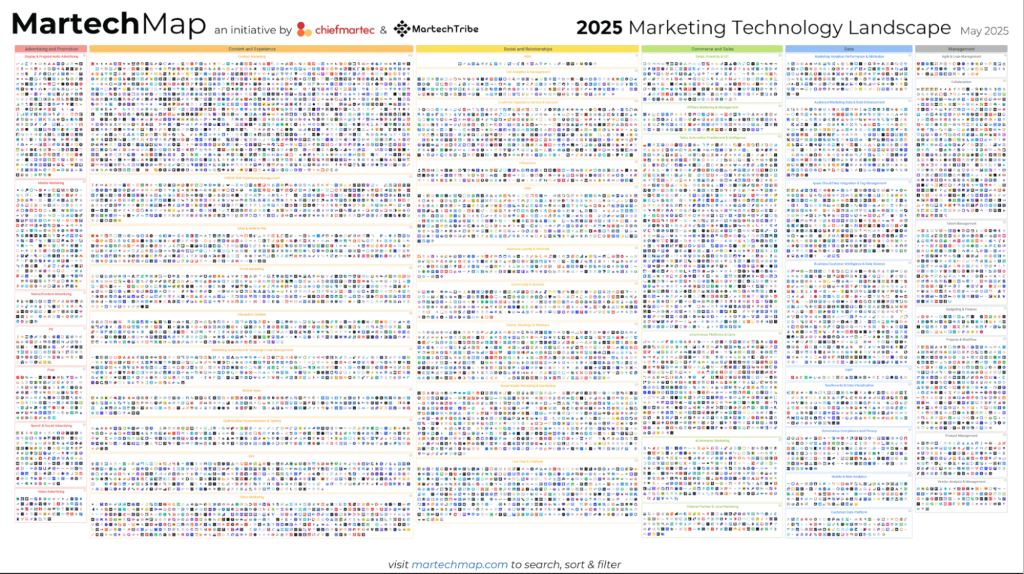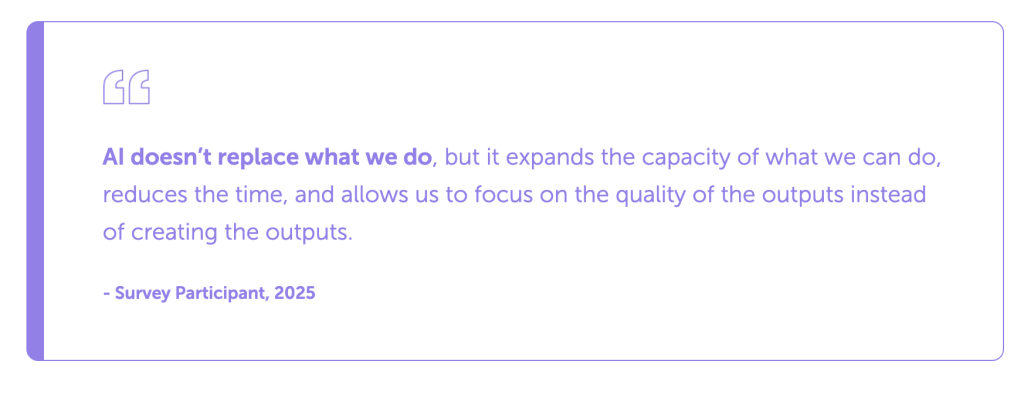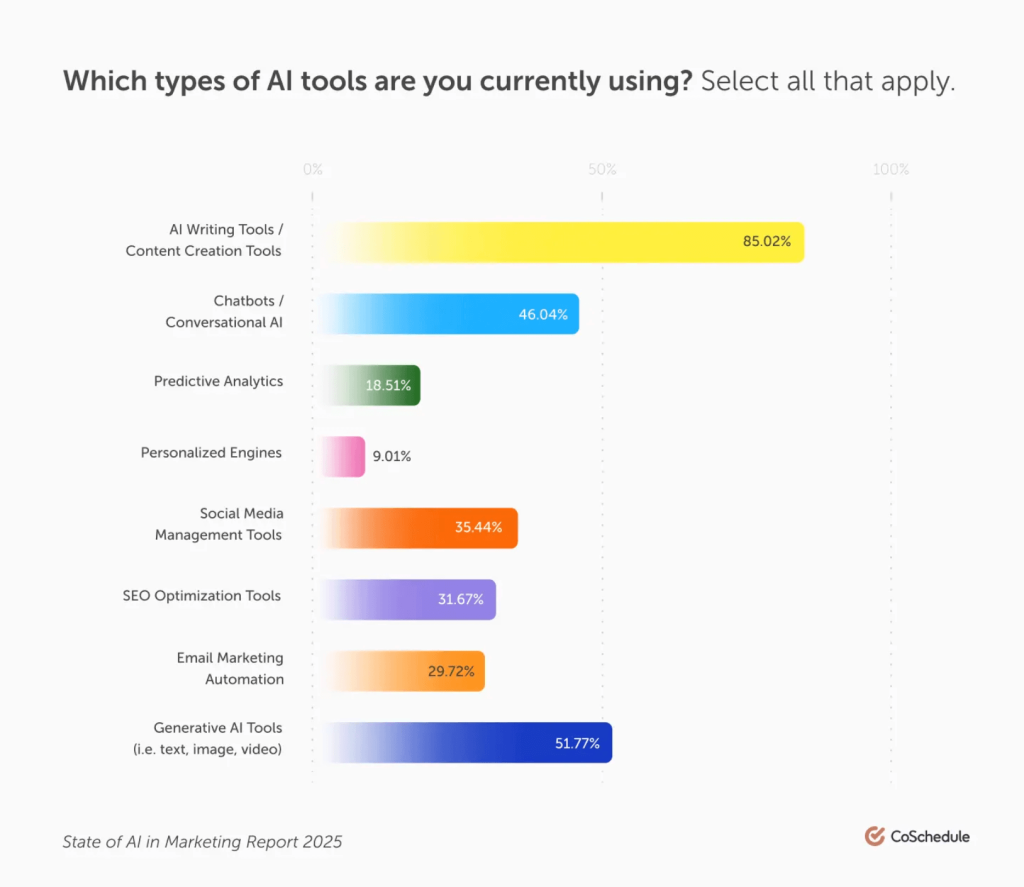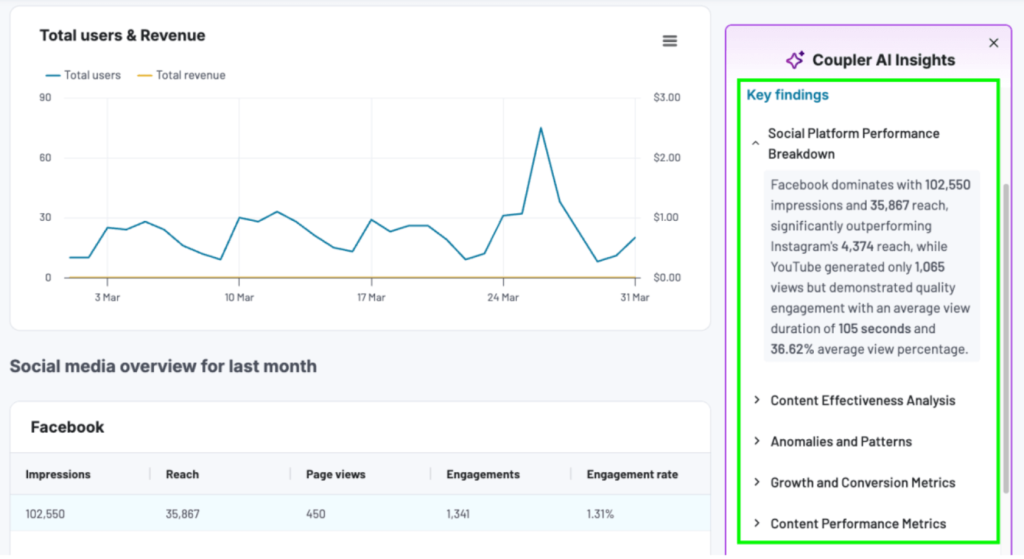Understanding the Modern Marketing Technology Landscape: The Martech Stack Data Silo Dilemma
It’s 9 AM on Wednesday. Your CEO wants to know how yesterday’s email marketing campaign performed across all marketing channels.
What should be a 30-second answer turns into a 2-hour data hunt across five different martech tools like Google Analytics for traffic, HubSpot or Mailchimp for email metrics, Salesforce CRM for lead attribution, Google Ads for campaign costs, then manually calculating ROI in a spreadsheet.
In this article, we break down exactly why modern marketing stacks have become so complex. And you’ll explore how Coupler.io helps you cope with this exact scenario and many other marketing reporting challenges.
The daily data hunt marketing teams struggle with
Modern marketing teams operate within an increasingly complex martech landscape:
- Email marketing platforms track customer interactions in real-time.
- CRM systems monitor every touchpoint across the customer journey.
- Analytics tools follow user experience patterns down to the second.
- Marketing automation platforms and AI-powered advertising optimize campaigns automatically.
Yet here’s the paradox of modern marketing: your tools give you more data than ever, but you have fewer clear answers about what’s actually working.
Salesforce’s latest “State of Marketing” report found that marketers now use an average of 10 different data sources to piece together a complete view of their customer, while only 31% of marketers are fully satisfied with their ability to unify these data sources. Add the internal monologue every marketer knows:
“Why don’t these numbers match? Why is Google Analytics showing 1,000 clicks but Google Ads shows 1,050? And why does our CRM only have 800 leads when both platforms show more traffic?”
Sounds familiar?
Each martech solution excels at its specific functionality, but treats your other marketing tools like they don’t exist. The result? Data silos that force manual workflows, delay insights, and lead to decision-making based on incomplete information about your marketing efforts.
The 7 core categories in every martech stack
Your marketing stack likely falls into these seven categories. But here’s what most teams don’t realize: each category creates its own data fortress, and the walls between them are getting higher:
| Category | What they track | Example tools | What they do |
|---|---|---|---|
| Email Marketing & Automation | Open rates, click-through rates, conversions | Mailchimp, HubSpot, Marketo | Nurtures customer interactions with complex automation workflows. |
| Social Media Management | Brand presence, engagement, follower growth | Sprout Social, Hootsuite, Buffer | Manages your brand’s presence and engagement across all social channels. |
| Digital Marketing & Advertising | Traffic, conversions, cost per acquisition | Google Ads, Meta Ads, LinkedIn Ads | Drives traffic and conversions through paid campaigns on search and social platforms. |
| Analytics & Customer Data Platforms (CDP) | User behavior, website performance, funnel analysis | Google Analytics, Mixpanel, Amplitude | Offers deep insights into user experience. |
| Customer Relationship Management (CRM) | Lead lifecycle, deal progression, revenue attribution | Salesforce, HubSpot, Pipedrive | Provides lead scoring and tracks the complete customer journey. |
| Content Management & SEO | Content performance, search rankings, organic traffic | WordPress, Webflow, Ahrefs, Surfer SEO | Creates and manages content, often with the help of generative AI, and optimizes it to rank in search engines. |
| Marketing Operations | Task management, project workflows, team collaboration | Asana, Trello, Notion, Zapier | Organizes tasks, projects, and automates internal workflows to keep the team efficient. |
The challenge isn’t the quality of individual solutions. It’s that they operate as isolated islands in your marketing ecosystem.
The average marketing team checks 5-7 of these categories daily to answer a single question: “What’s working?” This isn’t a workflow—it’s data whack-a-mole.
This creates data silos that limit your ability to see the complete picture of marketing campaigns and leverage the new wave of AI tools available.
How marketing teams ended up with complex martech stacks
Ten years ago, a marketing manager could understand their entire funnel on a napkin. Today, that same napkin would need a legend, color coding, and a magnifying glass.
The simple past vs. the complex martech landscape
Let’s take a quick trip back in time. Just ten years ago, marketing operations were simpler. Teams used basic email marketing tools, simple web analytics, and maybe a basic CRM system. Here’s the evolution that brought us to this complexity:
2014: 3-5 tools (Email + Website + Basic CRM)
2019: 12-15 tools (Added social, paid ads, automation)
2024: 25+ tools (AI optimization, customer data platforms, attribution modeling)
Check out our selection of marketing attribution software.
2025: Each tool now has 3-5 sub-tools and integrations
Scott Brinker’s famous martech landscape graphic showed just a few hundred marketing technology solutions.
Fast-forward to today, the state of martech tells a different story.
Looking at the latest supergraphic, there are over 11,000 different marketing tools available, with the average company using more than 200 SaaS applications.

This is the main reason why the average company now finds itself juggling hundreds of separate SaaS applications across its teams.
The “Best-of-Breed” approach and the rise of data silos
So, how did we end up with so many disconnected tools?
Marketing teams made a logical choice in building their tech stack: instead of settling for mediocre all-in-one platforms, they selected the best martech solution for each specific marketing function.
This is the dominant strategy for high-performing teams. The latest “State of Martech & Marketing Operations Report” found that 86% of CMOs prefer building their stack with best-of-breed tools over relying on a single all-in-one platform.
The average enterprise now has 62 tools in its stack, up from 56 in 2023.
This “best-of-breed” martech strategy maximizes functionality and gives marketing teams access to specialized features for content marketing, social media management, marketing automation, and customer experience optimization.
However, it created a new challenge: data silos across the martech stack.
Each best-in-class tool became its own data fortress, speaking a unique technical language through separate APIs and storing customer data in a different format.
What should be a connected marketing technology ecosystem is now a collection of isolated marketing tools that can’t share information about marketing campaigns, customer interactions, or business goals.
The result?
Powerful solutions that don’t communicate with each other force marketing operations teams to rely on manual workflows to connect customer data across different touchpoints in the customer journey.
Check out the best marketing analytics tools.
How company size changes martech strategy
The challenge of a disconnected marketing technology stack is universal, but the scale of the problem changes as a company grows. The “State of Martech” report for B2B marketing teams provides clear data on this:
- Startups and Small Businesses (1-50 employees): These teams prioritize cost-effective martech tools and flexible workflows. They often start with free or low-cost marketing automation platforms, adding new marketing tools as their digital marketing efforts grow, adding up to 29 tools. Each new martech solution adds another data silo, limiting their ability to understand the complete customer experience.
“We’re adding tools faster than we can learn them. Sarah in marketing uses 12 different logins just to create a weekly report.”
- Mid-Market Companies (50-500 employees): As companies grow into the mid-market, the complexity nearly doubles. They have enough complexity in their marketing campaigns to require specialized marketing technology for SEO, content marketing, social media management, and e-commerce operations, but lack the resources for custom enterprise martech solutions. They feel the pain of disconnected martech stacks most acutely as their marketing teams try to optimize across multiple marketing channels, spanning an average of 53 tools.
“We have the budget for good tools but not for custom IT solutions. We’re sophisticated enough to need specialized tools but too small for enterprise-level integration.”
- Enterprise Organizations (500+ employees): At the enterprise level, the stack size peaks. Companies focus on vendor management and custom integrations through APIs and data warehouses, managing an average of 62 marketing tools. They have resources for complex martech solutions and often work with providers to build custom workflows, but struggle with legacy systems and change management across large marketing operations teams.
“We have 23 different teams using 62 different tools. Our ‘single source of truth’ is actually 17 different truths that rarely agree.”
Regardless of company size, the fundamental challenge is still data management, with the report revealing that “improving martech stack integration” is a top-three priority across all company sizes.
So, how do you tackle this top priority when you’re not a developer?
And yes, while the thought of adding another tool to your stack might sound counterintuitive, a data integration specialized platform can help you solve this exact problem. These are integration tools, such as Coupler.io, built specifically for marketers and other business users, allowing you to connect your entire stack without needing to write a single line of code.
How to connect your martech stack (The right way)
So, what does using one of these integration tools actually look like in practice?
It’s not the complex, months-long IT project that everyone is trying to avoid. The goal isn’t to rip and replace the tools you love; it’s to make them work together as a single, coordinated team.
The entire process follows a straightforward, three-step playbook that anyone on your marketing team can manage.
Step 1: Identify your core marketing data
Before you connect anything, decide what actually matters. Start with the ‘Friday afternoon test’: What data do you need to see by 5 PM on Friday to know if your week was successful? That’s your integration priority list.
The goal isn’t to connect every single tool at once, but to start with the sources that will give you the most valuable insights. Include a simple checklist:
??Revenue source data (where did the money come from?)
?? Cost data (how much did we spend to get it?)
?? Volume data (how many leads, visitors, conversions?)
?? Quality data (which sources convert best?)
For most teams, this means asking:
- Where does my ad spend data live? (Google Ads, Meta Ads or Linkedin Ads)
- Where are my website analytics? (Google Analytics, Google Search Console)
- Where is my lead and customer data? (Salesforce, HubSpot)
- Where are my campaign engagement metrics? (Mailchimp, Marketo)
The key is to start small. Pick the 3-5 data sources that you check most often to make critical decisions.
Step 2: Choose a data destination
Next, all this data needs a home. This could either be a data visualization tool or a data warehouse. Choose a single destination where all this data will live to support your marketing strategy and decision-making. Choose based on your team’s comfort level:
- If your team lives in spreadsheets ? Google Sheets or Microsoft Excel for maximum flexibility, easy sharing, and simple analysis.
- If you want to impress executives ? Looker Studio or Power BI for building interactive, real-time marketing dashboards.
- If you need advanced analysis and you’re planning to hire data analysts ? BigQuery or Snowflake for enterprise-level reporting and large-scale marketing operations.
The key is picking one destination that your marketing teams will actually use regularly to optimize marketing campaigns and track business goals.
Step 3: Connect your martech tools and automate data workflows
This is the step where the manual work ends. Once you’ve chosen your sources and destination, use Coupler.io as the bridge to bind them together. In a few simple steps, you can connect 70+ data sources from across your stack. The process is simple and requires no code:
- Connect your marketing technology sources: Securely link your Google Ads, HubSpot CRM, Google Analytics, email marketing platforms, and other tools through pre-built integrations.
- Select your marketing data: Choose the exact metrics you need from each tool, like “spend” and “clicks” from your ad platforms.
- Clean and prepare your data: Standardize formats, rename columns, or apply filters before the data is moved.
- Set your marketing dashboard destination: Point the data to your chosen Google Sheet or dashboard with pre-built integrations.
- Schedule automatic data workflows: Set your data to refresh daily, weekly, or even hourly.
The entire martech integration setup takes a couple of minutes per marketing tool. Once configured, your customer data flows automatically without any manual intervention from marketing teams. Here’s what “minutes, not months” actually looks like:
- Connect Google Ads + HubSpot + Google Analytics + Mailchimp: 4 minutes
- Organise your data, including clean up, filtering, consolidation, aggregation, etc.: 10+ minutes depending on the data sources and transformation you need
- Setting up automated refresh: 30 seconds
- Building your first dashboard: 15 minutes
All of this marketing data is consolidated into a single marketing dashboard that updates automatically, providing marketing teams with a real-time view of their entire customer experience and marketing funnel across all channels.
Total time investment: Under 30 minutes. Time saved per week: 4-6 hours.
Automate and act on your data using one solution
Coupler.io is an all-in-one solution to automate data flows and turn raw data into insights. For this, you can use the abovementioned Transformations, as well as predesigned datasets and dashboard templates. The latter means that you don’t need to create reports from scratch with blank spreadsheets or empty visualization tools. Just connect your marketing sources and get your data visualized in minutes, like on this All-in-one marketing dashboard. It collects data from your advertising platforms, website analytics, social media accounts, and email marketing tools into a single, automatically-updating view.
Moreover, all Coupler.io dashboards are equipped with the AI Insights feature that analyzes data to provide strategic recommendations. For example, it may highlight that “Your LinkedIn campaigns show 23% higher conversion rates—consider increasing budget allocation,” or “Facebook ad frequency spiked to 8.2—recommend pausing underperforming ad sets.”
In addition to that, Coupler.io provides over 100 ready-to-use dashboard templates in spreadsheets and BI tools for instant marketing data visualization. They are designed specifically for common marketing scenarios to combine the right metrics, calculations, and visualizations for specific use cases.
Explore Coupler.io dashboards and templates
Get started for freeThe result: From fragmented martech tools to 1 unified marketing operations dashboard
To make this tangible, let’s look at a common scenario: checking cross-channel campaign performance. Here’s how a 60-minute manual task transforms into a 30-second check.
| Before: Manual data collection | Time | After: Connected martech stack | Time |
| Open Google Ads platform | 2 min | Open unified marketing dashboard | 30 sec |
| Export Google Ads data to Excel | 3 min | All data automatically updated | – |
| Open Meta Ads platform | 2 min | All platforms connected | – |
| Export Meta customer data | 3 min | Real-time data sync | – |
| Open LinkedIn advertising | 2 min | Integrated view | – |
| Export LinkedIn campaign data | 3 min | Automated workflows | – |
| Manually combine data in spreadsheets | 15 min | Data already unified | – |
| Calculate marketing ROI | 10 min | Calculations pre-built | – |
| Create charts for CMO reporting | 20 min | Visualizations ready | – |
| Total Time | 60 min | Total Time | 30 sec |
| Outcome | Basic insights about marketing efforts | Outcome | Comprehensive insights across all marketing channels and touchpoints |
The transformation isn’t just about time savings for marketing teams.
It’s about the quality of insights you can generate when all your martech tools work together to provide a cross-channel marketing analytics of the customer journey and campaign performance.
The payoff: why integrated marketing tool stacks are the way to go
The 60-minute to 30-second transformation above is powerful, but there’s more than just saving time.
The real payoff comes from eliminating the hidden costs that a disconnected stack creates every single day.
Let’s break down what those costs look like in practice and how a connected stack solves them.
From manual data work to strategic impact
The cost: The most obvious drain of a disconnected stack is the time your team loses to manual chasing data. This is a universal struggle that the Salesforce report identified: “Integrating disparate technologies and data” is one of the top three challenges marketers face.
The payoff: A connected stack directly solves this challenge, eliminating the cost of wasted time. It automates the integration work, freeing your team to focus on strategic initiatives that drive growth. Those same hours are redirected toward analysis, strategy development, creative campaign planning, and optimization. Your team transforms from data collectors to data analysts and strategic thinkers.
Case study: United Way Northwest Indiana exemplifies this transformation perfectly. The organization was spending approximately 80 hours per month manually pulling reports and assembling data from Facebook Ads, Google Ads, Google Search Console, and Google Analytics 4. After implementing an automated data integration solution, Coupler.io, they reduced this to just a few hours monthly. This freed up their marketing team to focus on strategic initiatives like campaign optimization and donor engagement strategies. The time savings translated into tangible ROI – they saved around $20,000 per year in labor costs while gaining the ability to make faster, more informed decisions about their marketing efforts.
From data chaos to a single source of truth
The cost: Disconnected tools create conflicting data, making it impossible to make sound strategic decisions. Each department ultimately operates from its own version of the truth. This is what that data chaos looks like:
- Google Analytics shows 1,000 website signups, but your CRM only has 800 new leads.
- Your email platform reports a 25% open rate, but your sales team sees very different engagement numbers.
- Marketing claims 50 new MQLs, but Sales says only 30 are actually qualified.
The payoff: A connected stack creates a single source of truth, eliminating the guesswork. When marketing and sales work from the same, automatically updated numbers, you can confidently invest your budget into the campaigns that are proven to drive real business results from top to bottom.
Case study: Habitium, an e-commerce platform managing over 400,000 products across 500+ distributors, struggled with pricing and stock synchronization issues that led to lost sales and competitive disadvantages. Their manual data management processes couldn’t keep up with the volume and complexity of information from multiple suppliers. By implementing Coupler.io, they eliminated pricing errors and stock discrepancies, leading to a 5% increase in profit margins and 11% increase in sales. The single source of truth for product data enabled real-time inventory management and eliminated the risk of selling out-of-stock items or pricing products incorrectly.
From operational drag to future-ready strategy
The cost: Your disconnected data is holding you back from the future of marketing: Artificial Intelligence. Marketers cite “improving efficiency” as the #1 benefit of AI, but AI is only as good as the data it’s fed. Messy, siloed data makes it impossible to leverage AI marketing tools effectively, leaving these massive efficiency gains untapped.

But messy, siloed data makes it impossible to leverage AI effectively, leaving these massive efficiency gains untapped. Predictive analytics tools have one of the lowest adoption rates among the new AI tools available.

The payoff: A connected stack gives you the clean, organized, and unified data that AI models require. It eliminates the opportunity cost of being unprepared and unlocks the ability to use AI for the real-time optimization and personalization that the next generation of marketing strategies requires.
And you don’t have to wait for complex AI implementations to see immediate benefits. Coupler.io has already equipped its dashboards with the AI Insights feature to instantly analyze your connected marketing data and deliver actionable recommendations in under 30 seconds. Instead of spending hours digging through dashboards to find trends and anomalies, AI Insights automatically highlights what’s working, what’s not, and exactly what to do about it – from reallocating advertising budgets to optimizing underperforming campaigns.

The result: Connected data plus AI insights transforms your team from reactive analysts to proactive strategists. You’re not just ready for the AI-powered future of marketing – you’re already living it, making data-driven decisions faster and more accurately than ever before.
Try AI insights in Coupler.io dashboards
Get started for freeFAQs
Should my team use an all-in-one platform or best-of-breed tools?
The “all-in-one vs. best-of-breed” debate misses the real solution: connected best-of-breed tools. All-in-one platforms promise simplicity but often deliver mediocre functionality across all features. You sacrifice the specialized capabilities that make individual tools powerful.
Connected best-of-breed tools offer the best of both worlds. You get specialized functionality from tools that excel at specific jobs, plus the unified data view that all-in-one platforms promise. With modern integration platforms, you can maintain your favorite tools while eliminating data silos.
Do I need technical skills or a data engineer to connect my marketing tools?
No. Modern integration platforms are built specifically for business users and require no coding knowledge. The setup process typically involves:
- Logging into your existing accounts through secure OAuth connections
- Selecting the data you want to export using dropdown menus and checkboxes
- Choosing your destination and setting up automatic refresh schedules
Most integrations can be configured in 15-30 minutes. If you can set up a new social media account or email campaign, you can set up data integrations.
What’s the difference between an integration platform and a data warehouse?
An integration platform is designed for business users who need quick, flexible access to their marketing data. Setup is simple, costs are predictable, and no technical expertise is required.
A data warehouse is a more complex and technical solution, typically managed by engineering teams. It’s designed for large-scale data storage and analysis, requires significant technical setup, and often costs thousands of dollars per month.
For most marketing teams, an integration platform provides the right balance of capability and simplicity. Data warehouses make sense for enterprise organizations with dedicated data engineering resources.
How do I convince my team to adopt another new tool?
Frame it as “tool subtraction,” not addition. Show them the 7-8 tabs they can close permanently once data flows automatically. Most teams see integration as removing complexity, not adding it.
What if our data has quality issues?
Integration actually improves data quality by making inconsistencies visible. When you see Google Ads reporting 500 clicks but Google Analytics showing 485 sessions, you can investigate and fix the tracking issue instead of living with “close enough” numbers.
How long before we see ROI?
Most teams recoup their investment in the first month through time savings alone. The strategic benefits—better decision making, faster optimization, improved campaign performance—typically show up within 60-90 days.
The future of marketing stacks
The future of the marketing stack isn’t about finding one perfect, all-in-one new tool that does everything okay. It’s about having the freedom to assemble your own perfect stack by connecting the best-of-breed tools that fit your unique needs. Industry experts call this a “composable” approach.
2025: Privacy regulations make third-party data scarce—first-party data integration becomes critical for survival.
2026: AI marketing tools become table stakes—teams without clean data can’t compete.
2027: Customer experience personalization reaches real-time—disconnected data means lost customers.
But that future is impossible to reach if you’re still paying the high costs of a disconnected stack: wasted time, bad data, and missed opportunities.
The practical solution is to use an integration platform to connect the tools you already have. The companies that integrate their stacks in 2025 will have a 12-18-month head start on companies that wait.
You can start today with one manageable step: pick your three most important data sources and connect them to a single destination.
Don’t let another Monday morning start with a 2-hour data hunt.
Take the 15-minute integration assessment: Connect your Google Ads and Google Analytics and see your unified data in a pre-designed dashboard or dataset.
Ready to build a more connected and effective marketing stack? Try Coupler.io for free and set up your first automated data flow in under 30 minutes.





